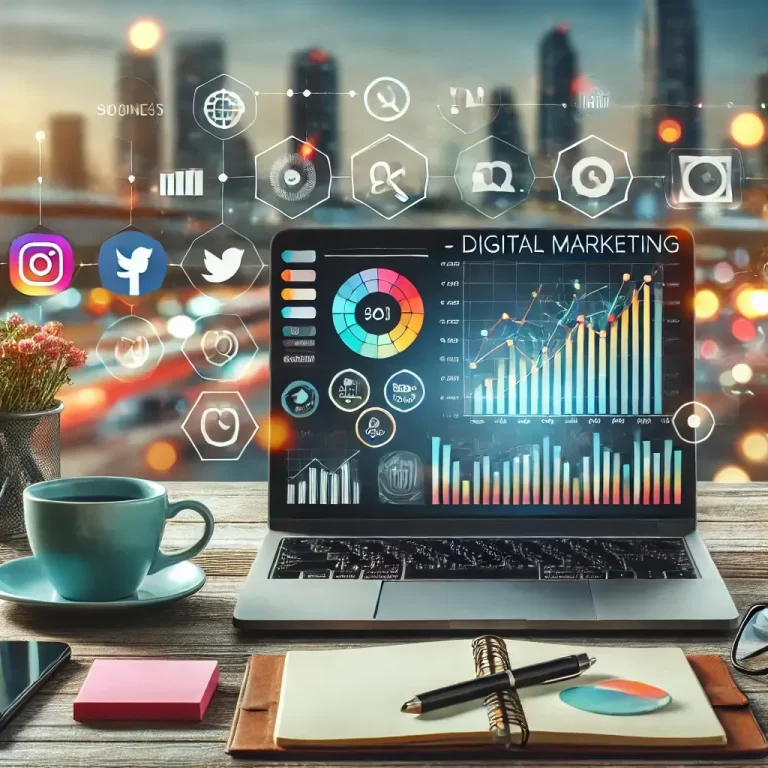Digital Marketing Channels

Digital marketing thrives on diversity. Many outlets exist for business marketing enabling organizations to create specific communications structures that address unique goals and target audiences. When different channels unite they form an enhanced marketing synergy based on their distinct functions.
What Are Digital Marketing Channels?
Special platforms and tools known as digital marketing channels help businesses reach their online target audiences. Social media as well as email platforms enable brands to engage their audience for both recognition-building and quantitative sales. The selection of appropriate channels depends both on customer preference patterns and business performance targets.
The Major Digital Marketing Channels
Search Engine Optimization (SEO):
SEO focuses on optimizing your website to rank higher on search engines like Google. It involves keyword research, content optimization, and building backlinks.
Example: A blog post optimized for the keyword “best hiking trails” ranks on the first page of Google, driving traffic to an outdoor gear store’s website.
Platforms like Facebook, Instagram, and LinkedIn are invaluable for connecting with audiences. Businesses use social media to share content, run ads, and build community.
Example: A fitness brand uses Instagram Reels to showcase quick workout routines, engaging with a younger audience.
Pay-Per-Click Advertising (PPC):
PPC campaigns place ads on search engines or social platforms, where advertisers pay for each click. It’s ideal for driving immediate traffic.
Example: An e-commerce store runs Google Ads targeting “affordable home decor,” bringing potential buyers to their website.
Content Marketing:
This channel involves creating and distributing valuable content like blogs, videos, and infographics to attract and retain an audience.
Example: A software company shares tutorial videos and whitepapers, establishing itself as an industry expert.
Email Marketing:
Email is a powerful tool for nurturing leads and retaining customers. Personalized emails can improve engagement and drive sales.
Example: An online bookstore sends out a weekly email featuring new arrivals and personalized recommendations.
Affiliate Marketing:
Partnering with affiliates to promote your products or services in exchange for a commission. It’s performance-based and highly scalable.
Example: A tech company collaborates with popular bloggers to review their latest gadgets, reaching new audiences.
Influencer Marketing:
Leveraging influencers with a loyal following to promote your brand. It works well for building trust and awareness.
Example: A skincare brand partners with a beauty influencer to showcase their products in Instagram Stories.
Video Marketing:
Videos engage audiences like no other medium. Platforms like YouTube, TikTok, and Instagram are ideal for video marketing.
Example: A travel agency creates stunning destination videos, inspiring viewers to book trips.
How to Choose the Right Channels
Selecting the right channels depends on your audience, budget, and goals. Here are some tips:
Know Your Audience: Conduct surveys and use analytics tools to understand where your audience spends time online.
Set Clear Goals: Whether you want to boost brand awareness or drive sales, your goals will dictate the best channels.
Test and Optimize: Start small, monitor performance, and adjust your strategy based on what works.
The Power of an Omnichannel Approach
While each channel has its strengths, using them together can create a seamless customer experience. For instance, combining social media ads with email follow-ups ensures consistent messaging and better engagement.
Final Thoughts
The digital landscape offers endless opportunities, but success lies in choosing the right channels and crafting targeted strategies. By understanding your audience and leveraging the strengths of each platform, you can create a winning digital marketing campaign that delivers measurable results.
Let digital marketing channels be the bridge that connects your brand to its next big success!
Contact
410 C, Jaina Tower-1, District Center, Janak Puri New Delhi-110058, India.
© Copyright 2025 Wontonee. All Right Reserved.
